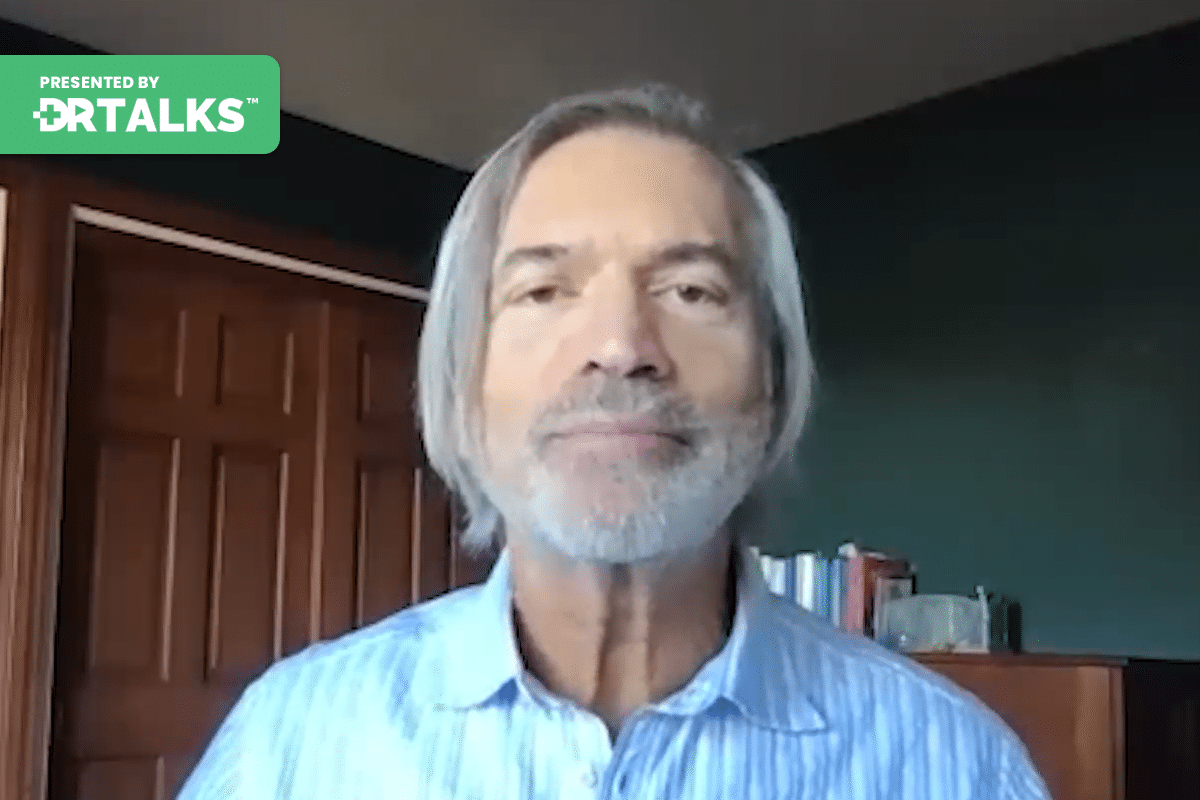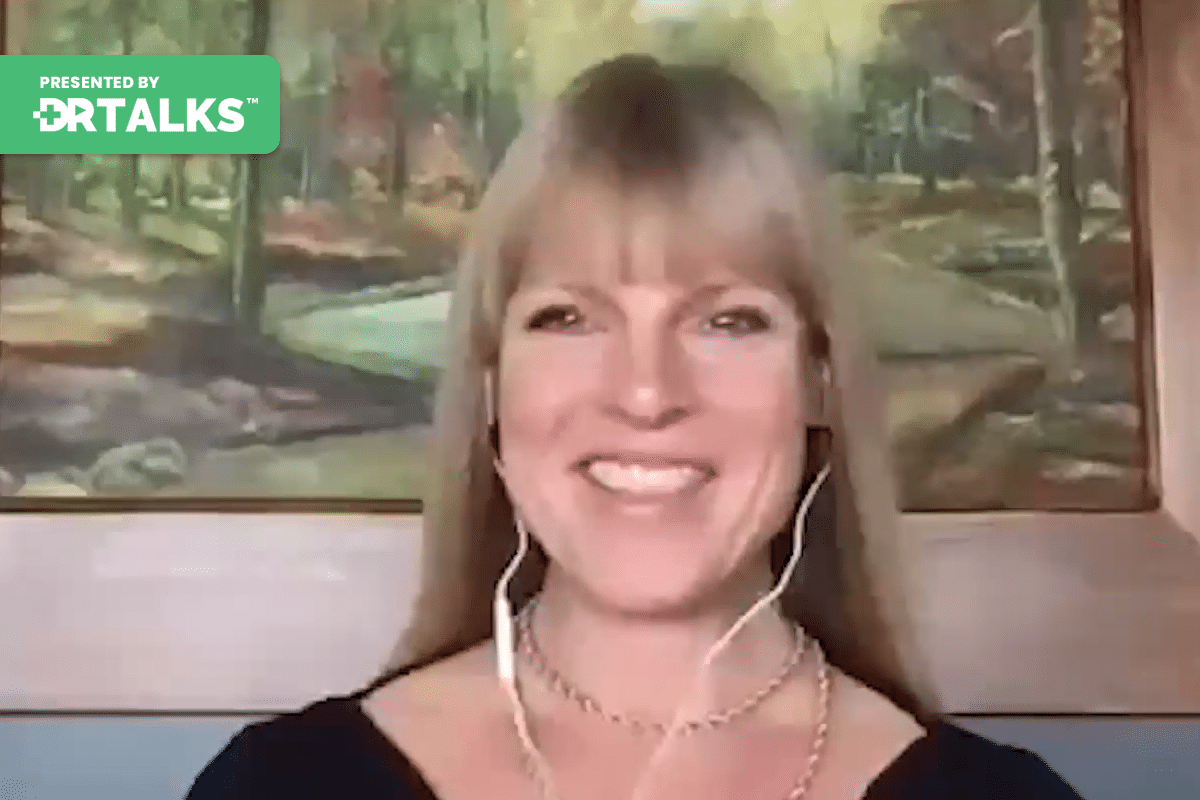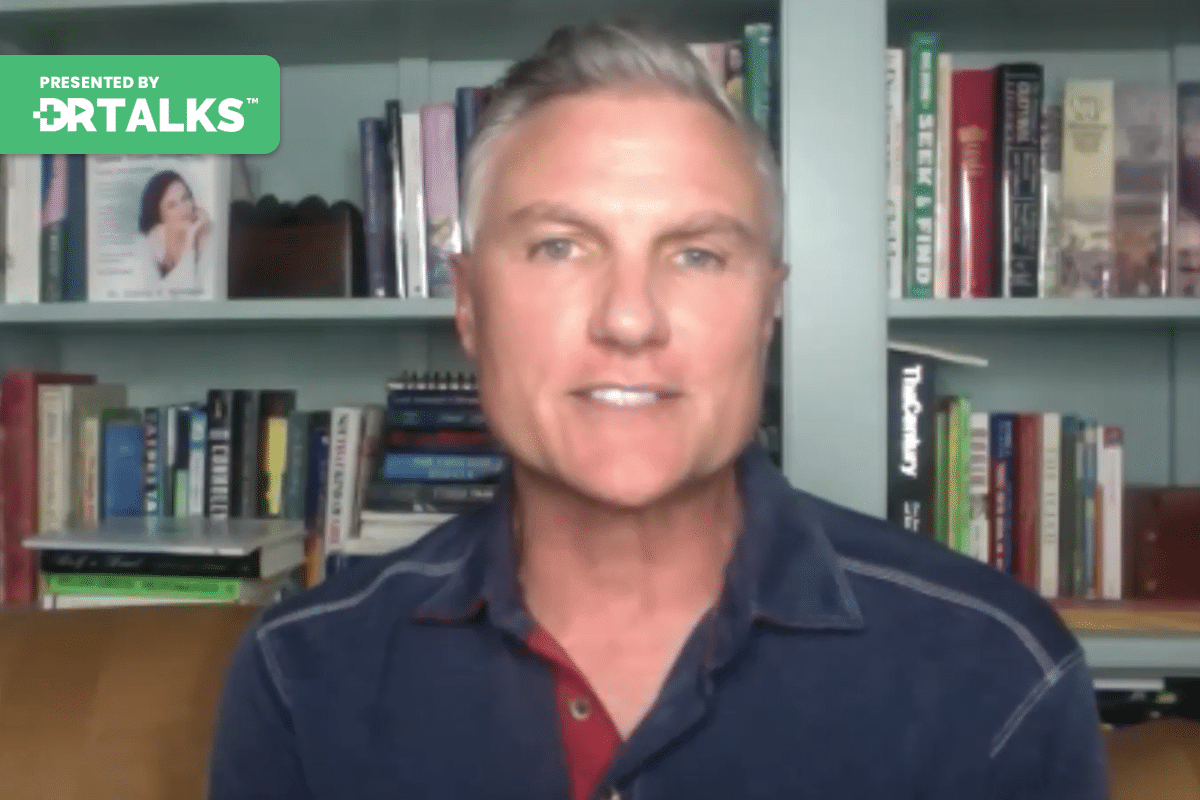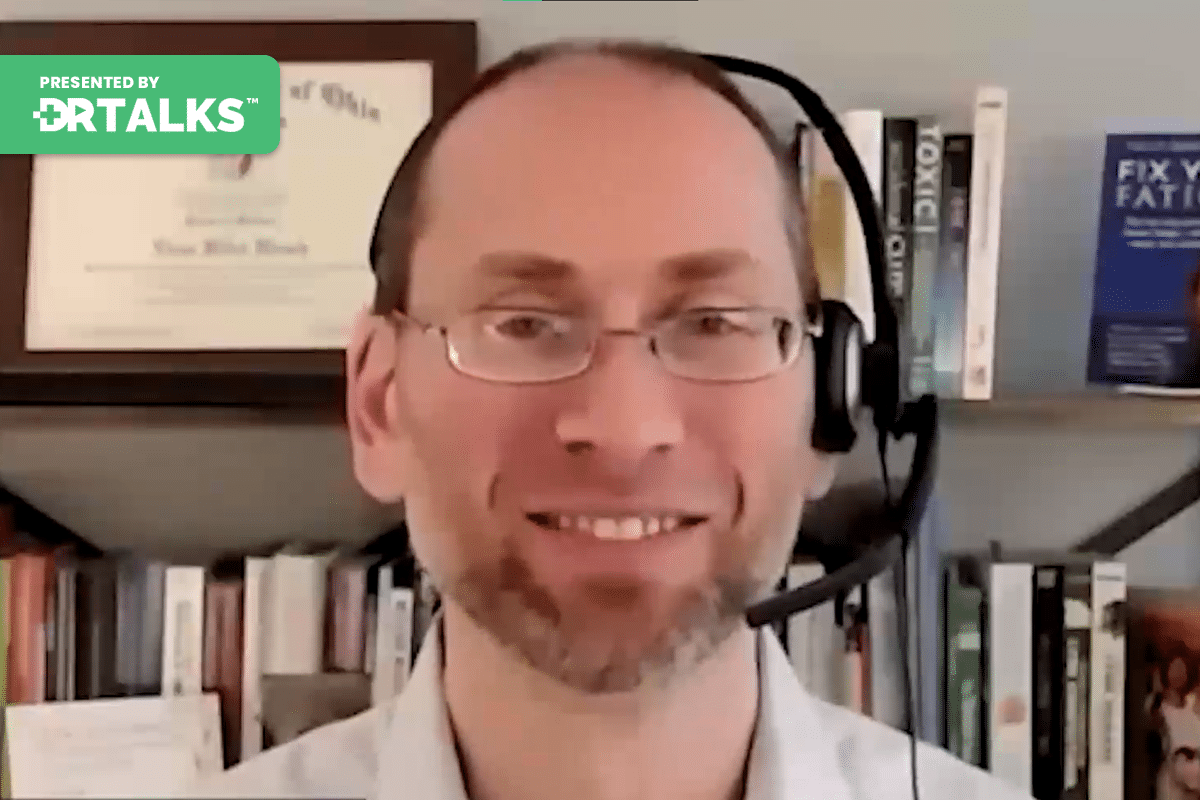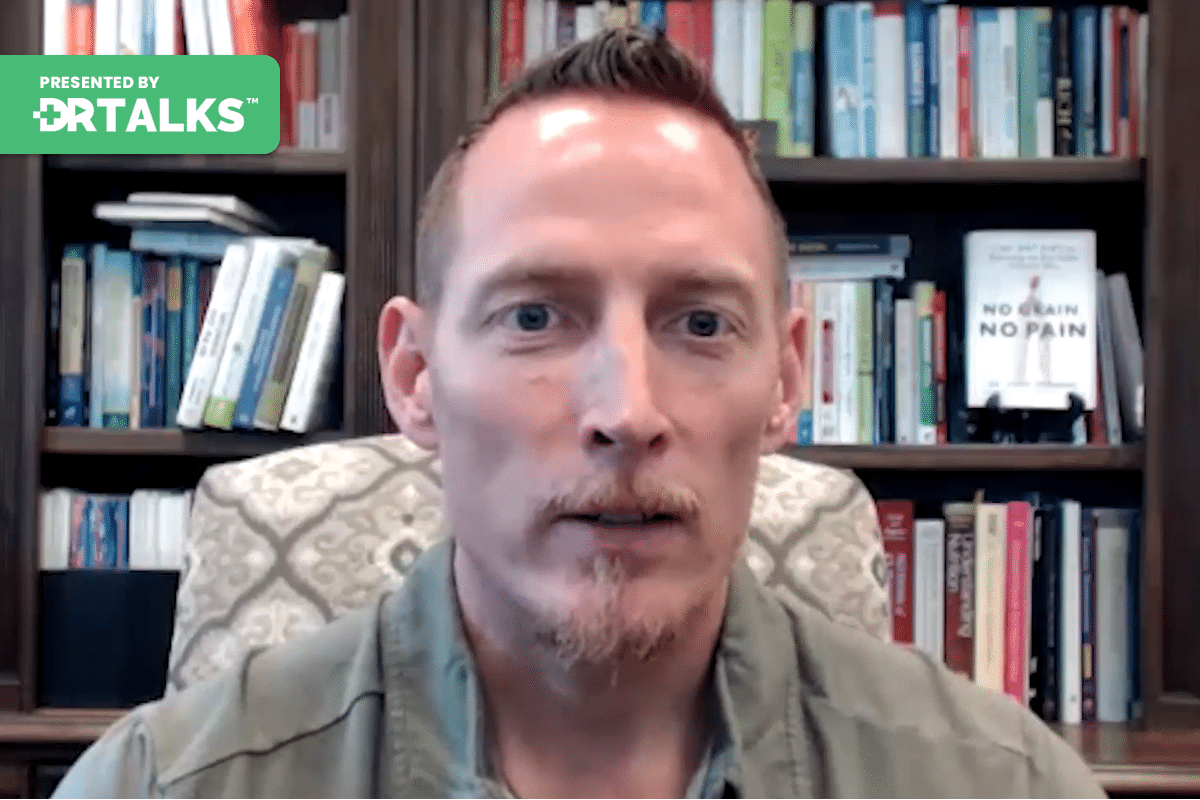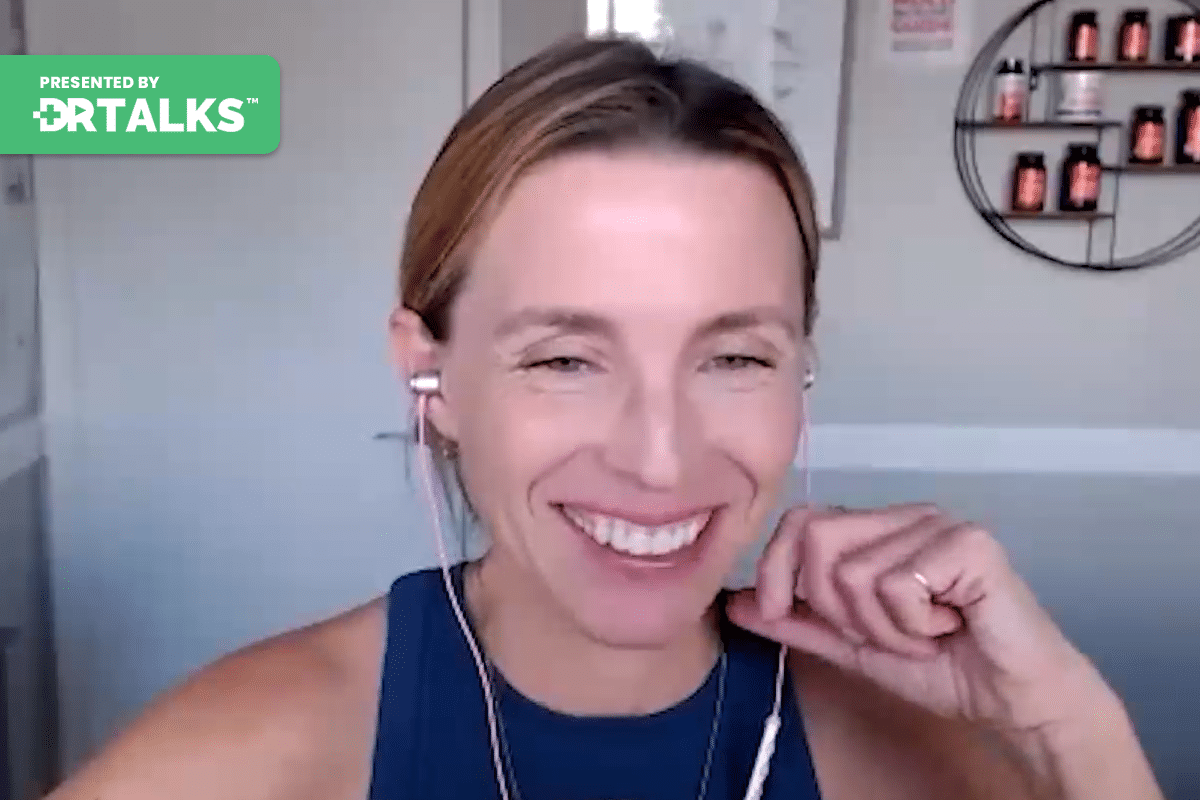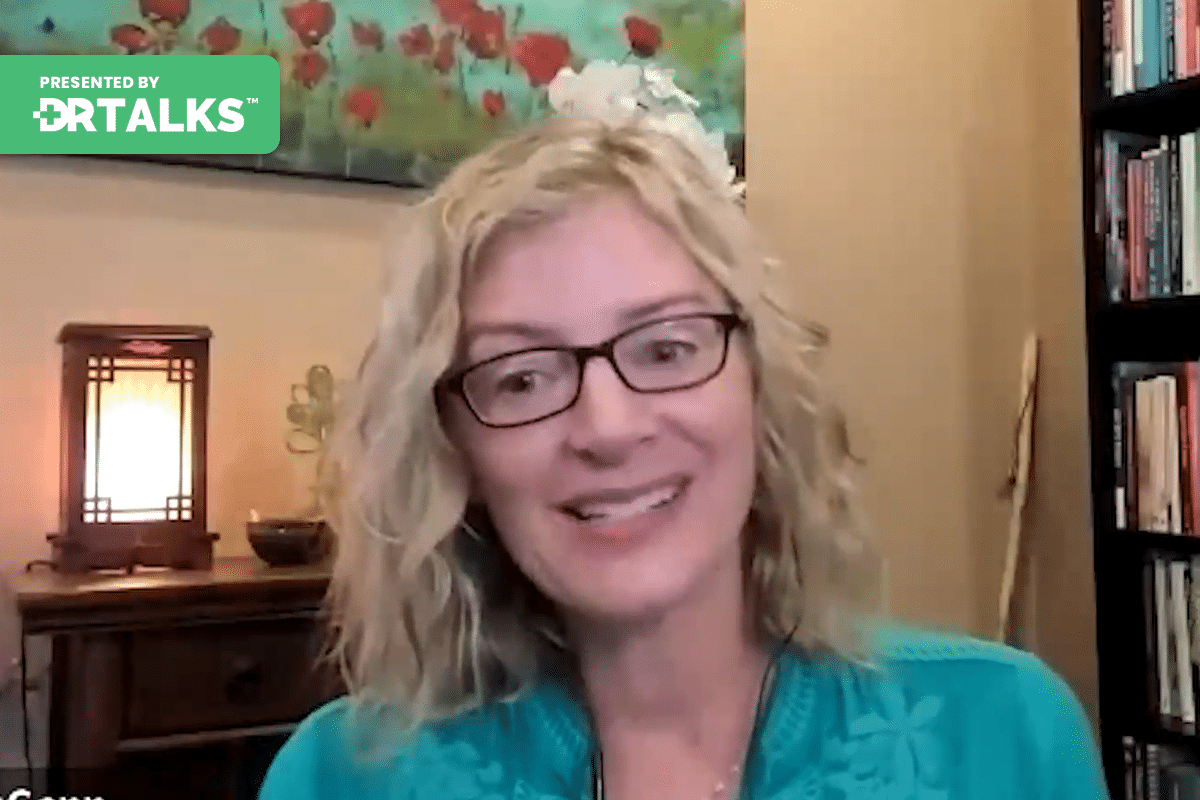Join the discussion below
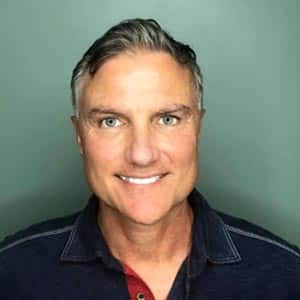
Dr. Rodger Murphree is a chiropractic physician and board certified nutritional specialist. He is an internationally recognized fibromyalgia expert. His “Murphree Method,” a combination of functional and orthomolecular medicine, has helped thousands of patients get healthy and feel good again. He’s the author of 3 books for patients and doctors including... Read More
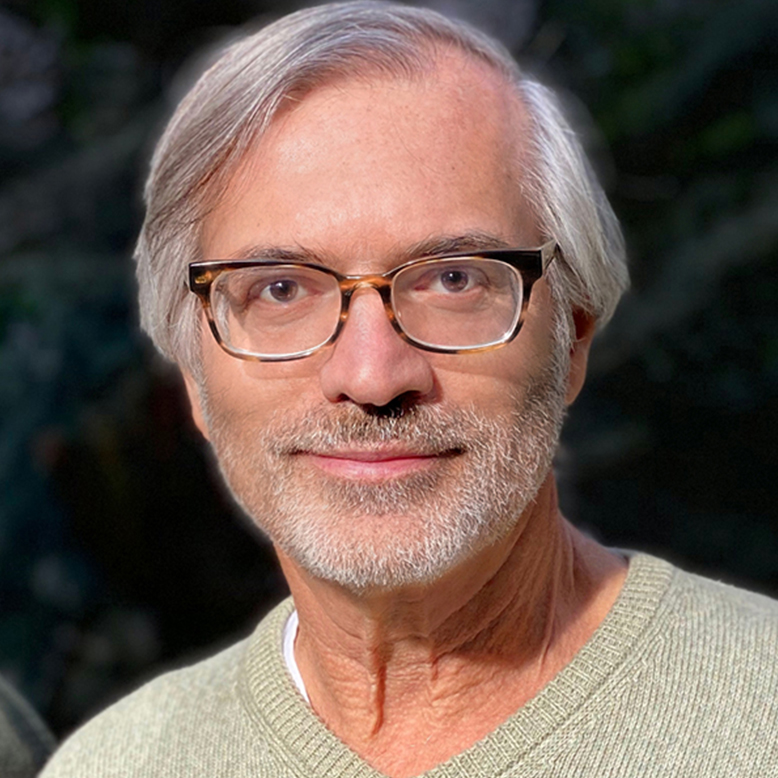
Eric Gordon, MD is President of Gordon Medical Research Center and clinical director of Gordon Medical Associates which specializes in complex chronic illness. In addition to being in clinical practice for over 40 years, Dr. Gordon is engaged in clinical research focused on bringing together leading international medical researchers and... Read More
- Are you stuck in cell danger response?
- How stress, real or imagined, pathogens, and toxins can keep you in a survival mode
- What is triggering inflammation, fatigue, and brain fog?
Related Topics
Cell Danger Response Theory, Energy, Fibromyalgia, Immune System, Inflammation, Mitochondria, StressRodger Murphree, DC, CNS
Welcome to the Freedom from Fibromyalgia Summit. I’m Dr. Rodger Murphree. I’m your host. And I want to introduce you to Dr. Eric Gordon. Dr. Gordon is one of my new favorite colleagues. It seems like we’re on some kind of zoom call every other week that you’ll soon learn why it’s really fun hanging out with him. And we’re going to be talking about cell danger theory. This is I think it’s appeared on that really ties a lot of things together for fibromyalgia. So I’m really excited to have Dr. Gordon here. He’s Dr. Gordon is the president of Gordon Medical Research Center. He is the clinical director for the Gordon Medical Association, and he specializes in complex chronic illnesses in addition to his clinical practice of over 40 years. So he’s got maybe and he’s done quite a bit of research ideas about that today. But one of the things is this research. He co-wrote a paper with Dr. Robert Navia all about cell danger theory. And we’re going to go into detail about that and share with you some of the practicalities of how that affects fibromyalgia. And I think you’re going to really be fascinated by this conversation. So, Eric, welcome, welcome again. Hey, share with the audience who may not have heard this term cell danger theory, this whole cell danger response there KDR.
Eric D. Gordon, MD
Yeah, well, the CVR is a concept that Dutch Inovio, you know, developed and wrote about over time. You know, of course, he took many other people’s ideas and put them together in a context. But Tim, to me, it’s an explanation of how your body heals. Okay. It’s and you know, we in what I just laid out, you know, generally every day, you know, repair work, you know, I always call, you know, the general repair work that happens every night when you sleep that tsunami of calls that that the healing cycle or that have cycles at the health cycle, you know and the cell danger response is the stuff that you do after you’ve got an illness or a real injury. He calls the healing response, you know, and that’s where the cell danger issue comes in. You know, that’s where this choreographed mitochondrial response to injury happens. So the most important part of this for most people is the idea that the mitochondria are not just making energy. Okay? So I think that’s the thing we all learned had this idea that our mitochondria are energy production cell organelle in the body and that when your energy is low, it’s because your mitochondria are sick. Yeah, you know, we’re damaged.
Okay. And so I guess how would we have say that the big news for people is that Dr. Nadia was telling us that when you are ill and you have this what we call sickness behavior, you know, you’re tired, you can’t think straight. You got that brain fog. You know, you ache all over, you know, that you don’t really want to deal with other people. You know, you just want to like be alone. That sickness behavior, we see it in animals. You see it in one celled organisms that is being choreographed by your mitochondria. Okay. And that is the big news. It’s not just the mitochondria are got infected and now they’re not making energy. You know, they have actually decided to make less energy and to create and to make less ATP. So that is that the heart of the cell danger response is that your mitochondria, when you’re ill, are not sick. Even when you’re chronically ill. They’re working like they’re supposed to. The problem is when you’re chronically ill, you’re in a bit of a disk functional system, you know, and when you get acutely ill, this is how the system was designed to make you lie down, hang out in the corner, not want to interact with other people, not want to eat much.
You know, that’s sickness, behavior. The problem with sickness behavior as patients with fibromyalgia and chronic fatigue and other illnesses find out, is that when it stays, it’s not helpful anymore. You know, for two or three days, lying in bed and not talking to other people is sort of like your body’s natural quarantine. You know, you’re just not going to expose the rest of your family at your tribe, in your society to what made you sick. But anyway, so that’s supposed to be short lived. So to get to the heart of the cell danger response is that the mitochondria is now acting as an immune commander, if you will. Okay. It’s turning down the energy and signaling by putting ATP onto the surface of the cell, because the ATP normally is used to transfer energy molecules throughout the cell. But when the mitochondria sense danger, they start to put some ATP on the outside of the cell and that acts on will be called the pure energy nervous system, which is just to say another signaling pathway in the body. Purines ATP is a PUREEING molecule and there’s a whole lot of other ones. But the important thing is that when there’s a little more ATP on the outside of the cell, that signals your immune system that that cell is sick.
Yeah, okay. That’s the first immune signal. So that is the heart of the cell danger response is that your mitochondria sense danger and they sense it because they usually get these raw materials from how you’re from from the rest of the cell. Okay they get inside the mitochondria is where you burn your fat for energy and you, you know, you break down proteins sometimes for energy and you take the pyruvate and to make energy. So when they’re not working, all those things build up. And what really happens is oxygen builds up inside the cell, which makes this pro oxygen environment. That’s why when everybody is busy taking antioxidants is because it is well, you know, when you’re first sick, I always tell people a lot of antioxidants, you know, don’t always do that much because your body’s creating this oxidant problem because and this I want to stop in a minute because I don’t want to get too confusing, but mitochondria are the part of your cell that actually uses oxygen. Okay. When you make ATP, you make oxygen. You take oxygen and you make it into water kind of at the same time.
And when the mitochondria are not making energy, you’re not making that water, which is in my mind, I think one of the reasons that people often have the dehydrated sense when they’re ill. But I know. But that’s my idea. I don’t want to claim that as a scientific fact, but to me that makes a lot of sense. But the thing we do know is that because you’re not using up the oxygen inside the mitochondria, the oxygen concentration inside the rest of the cell, what we call the cytoplasm goes up and that triggers your antioxidant defenses to turn on. But first it helps kill viruses and bugs inside the cell. So anyway, so this is kind of like the overview of the mitochondria as protecting you as being able to turn on your immune system and turn down energy production. Now that’s all well and good, but just like everything in the body, you know, when you were systems were designed to turn on and turn off and turn on and turn off and turn on and turn off. When we have a linear pathway in the body, we usually get into trouble. So we get stuck in any stage of this cell danger response. We tend to have a persistent inflammation. So and I’m just going to give you a quick overview of KDR one, two and three, is that your Navy describes it, but we’re not going to go into the weeds with this because I have put to sleep many, many a medical audience with way to fine detail.
So just just the broad strokes is that the KDR one is what happens when you first get infected or hurt, you know, and in medicine we call it, you see redness, you know, the skin, the area will get what swollen and red you, you know, in regular medicine, we call the signs of inflammation, you know, redness, loss of function, pain. You know, that’s what happens in CCR. One, your innate immune system. You know, if people are familiar now with COVID, everybody’s become an immunologist. You know, that’s when you have all those neutrophils and macrophages going into the area. That’s KDR one. And at that point, you’re make it, you’re you all your energy is coming from burning glucose because what people don’t realize is that when you really need a lot of energy, you burn sugar not in the mitochondria, but right in the cytoplasm. You know, it’s because you can produce a short bursts of an amazing amount of energy. Despite burn sugar, it’s less efficient than the mitochondria because you only get two ATP or three or four, depending on when you burn sugar directly rather than about 34, 36 ATP when you burn it through the mitochondrial pathways. But you can put out 50,000 times more because you only have 400 to maybe 4000 or 5000 mitochondria in a cell. But you can turn up the small group of proteins and enzymes to fight 50,000 fold in the cytoplasm.
So you can do that. You can, you know, really nail the gas, but if you run out quick. So anyways, the KDR one is energy intensive system that doesn’t it doesn’t, but it’s very inefficient. So if you, if you have enough cells that are stuck in KDR one, you’re going to really want sugar. I mean, it’s funny, you know, we always talk about carbohydrate craving in our patients and we think of yeast and other, you know, cell, you know, bacterial overgrowth in the gut. But on some level, there are some people it’s just that they have enough cells, you know, in certain parts of their body that are stuck in this KDR one. That glucose just gives them instant energy because their mitochondria are not turned on. Now again, I always want to emphasize this is usually happening in only percentages of your cells, whether there be, you know, 1%, 5%, ten. You know, if you start getting to the, you know, 20, 30, 50% of your cells are stuck in this. You’re probably at the point of like you’re in the hospital, you’re really tired, you have sepsis, you know, you really have organ failure. You know, the good part is that the body can compartmentalize things pretty well. So this is KDR one acute inflammation.
Okay. And there are people with fibro who can be stuck in that. Sometimes the CCR two is the next step. So your body has in CCR one, you kill the bug if you can. You contain inflammation, you stop the bleeding. You know, if it’s an injury, you know, you get you chew up the injured tissue, you know, because if you had a, you know, a cut or a crush, you know, you’ve got to get rid of the old stuff. And then in KDR to your mitochondria turn up a notch, they start to they start to use oxygen. Okay. But at this point but they’re still not making a lot of ATP for the cell to use. They’re beginning to make more raw materials. They’re beginning to give you the beginning to make the raw materials that let your body make more RNA and DNA. Because now that the cell is trying to heal, now it’s beginning to reproduce. It’s fixing injured organelles. It’s deciding whether it’s going to reproduce. It’s producing signals that draw in stem cells to come in and give the signals more signaling to make more daughter cells to rebuild it, to rebuild the injured area. Now which is all good but you’re but you need for energy is still fairly dependent on burning sugar. And if too many cells are stuck in this stage, people will end up with things like type two, diabetes, hypertension.
You know, it thinks that sort and, you know, and and I always like to remind people that insulin resistance is a big marker for inflammation and though we probably should have said this in the beginning, you and I have talked about this in the past, that in my mind, all chronic illness and especially things like fibromyalgia are chronic inflammation. Yeah. You know, I mean, it comes in different flavors, but at the end of the day, it’s immune cells that haven’t figured out that the war is over. But also your mitochondria haven’t figured out that the war is over because it’s a communication system. We can’t you know, we always want to cut the circle and say, well, the mitochondria are in control, they’re doing everything. But I don’t know where it starts, you know, the chicken or the egg. I don’t know where this circle starts, but I do know they’re talking to each other. So somebody’s got to start and start changing the conversation. You know, the mitochondria either have to decide that the war is over and they start putting out the signals or the immune system has to. And, you know, obviously they do it together with a lot of crosstalk. But, you know, I think it’s a the body is should be a great lesson for those of us who want peace in the world. When you realize how many small steps each system has to do to give the other one the security, that it’s okay to move forward. Yeah, I don’t know. I getting up to see it for a minute but it is always amazes me when people always want, you know, to, to be peace, but they want the other guy to do all that to do all the actions, you know. And we really I mean, that’s where the great diplomats know the usefulness of these small signals that, you know, we really mean.
Okay, but we’re just doing something because that’s how your body changes a million changes of small signals. And then suddenly you make a quantum leap and you go from KDR one where you’re killing and you know, and like, you know, just and destroying cells, breaking up cells to suddenly KDR to where you’re healing the cells. And then you go to KDR three, which is really one of the more interesting places to be you because see, your three is when the cell has matured. It’s back to being functioning, but it still has to fix its memory. It still has to get that communication, because one of the things that happens in KDR, one is that the cell membrane hardens. You know, people talk about, you know, like how important it is to have all those polyunsaturated fats in your cell membrane and be nice, loosey goosey and well. But when you when when there’s danger, those that cell membrane, the proteins in it change and you develop, you know, you start spewing all exosomes, by the way, because those are communication molecules often that, you know, tell the other cells that there’s danger or that it’s safe to heal depending. But these are little pinching off things of your cell membrane, but there’s a lot of changes in the cell membrane in inflammation.
And right in the beginning, that cell membrane becomes less permeable. Okay? The ion channels changed, changed their shape. So all of the calcium and potassium and all those and magnesium going across don’t go is easily one of the reasons our patients have such trouble with magnesium when they’re you know, I mean, like this is because they’re not getting in into the cells. Well, that’s why they respond sometimes to those IVs of magnesium or high doses of magnesium or, you know, because just that that membrane is it letting it in. So anyway, so in stage one, you know, those cell membranes are really hardened and in KDR two, they’re beginning to change. But in KDR three is when they’re really the cell is learning how to be a heart cell, how to cooperate with the cells around it. Because in the beginning, just like people when you’re acutely ill, you’re not in a very cooperative mood. Yeah. You know, hey, we, you know, will you take out the garbage? You know, you’re laying in bed and feeling like crap? You don’t want to be helpful, you know, people usually know not to ask. In fact, you know, that’s one of the issues that we all have with people who have been chronically ill is that they do become irritable and it’s not because they’re bad people. It’s just because the biochemistry of the system is like me alone. Well, it’s happening on the cellular level also. Okay, so and in KDR three, we’re beginning to learn how to cooperate, how to hear those thyroid hormones. Okay. Because that’s something which we went to a lot of that favored resistance because if you have a lot of cells that are stuck in KDR three cell, you might be you might just, you know, those the T4 and T3 numbers might look fine, but the cells not responding, you know, until it matures, until it finishes the healing cycle and then it’s back to normal. So you got this KDR one, that acute inflammation. KDR two you’re beginning to rebuild lost cell and young damaged cells and KDR three kind of, as Bob says, they’re going to they’re going to school. They’re learning how to beat, how to communicate, you know, and be part of society again.
Rodger Murphree, DC, CNS
So, you know, I think so. There’s a lot there, a lot there. And people go, wow, where did that go? But the reason why is because we’re really diving down in and trying to understand vitalism in the cell. I mean, we’re trying to we’re all we have this inborn, innate healing dynamo that’s inside each one of us. And, you know, we don’t have to take it. Think about taking 12 breaths per minute. We have to think about pumping blood through our arteries and veins and digesting our food. Any of these things. This is happening. This this this innate inborn healing dynamo, these systems largely controlled by the hypothalamus and some of these other organs is making this happen. And the reason I like this paradigm, because I think it’s such a fit for fibro and that we know in fibromyalgia they have less mitochondria and that oftentimes the mitochondria, they have been then compromised. Now we have something that’s telling us, here’s one of the reasons why the mitochondria are being compromised. And Dr. Jacob Teitelbaum, he uses this analogy of Teitelbaum, who’s on the summit as a fibromyalgia expert. And he uses the analogy of fibromyalgia is like a like a fuze is blown in. You know, you’ve lost this energy is an energy drain, which totally makes sense when you’re losing the ability of this mitochondria to work like it’s supposed to.
Eric D. Gordon, MD
Yeah, well, I made.
Rodger Murphree, DC, CNS
The mistake of saying to Neil Nathan the other day, he was on it. We were talking to the doctors. I said, you know, the cell danger theory. I really like it. It really fits so many things that I found missing in the fibromyalgia model for the last 20 years. Dealing with these folks with a cell danger started with where the body’s overreacting and he said, wait a minute, I wouldn’t say that it’s really the body’s doing what it’s supposed to. It’s just not turning off. And now we got to realize there’s things that we’ve got to do to help it turn off and feel safe again. Yeah. And I wanted to give this example, and I think this will pull together what you just shared, this example of. You’ve got a virus that, you know, like COVID gets inside your cell and what the mitochondria, which is the messenger and the power plant of the cell and all these little organs in these organelles, it it feels threatened. And as you said, the membrane around the cell becomes hardened. So it’s trying to keep the virus or could be a mole toxin. It could be, you know, some other type of toxin in there is trying to keep it contained.
And then, as you mentioned, the mitochondria, instead of releasing this oxygen, holds onto it because it feels threatened and it builds up and then it releases this redox effect. We’re trying to kill the virus or the toxin, but then in the process it kills everything around the cell as well and sets up all this immune reaction. Right. That’s what you’re saying is in reaction that’s generating all these chemicals. And it’s certainly inflammatory chemicals, but histamine, a mass cell and then it and track it, keep going, but then it sabotages our methylation system. So so many of you have heard about the promise in MH, FDR or methylation issues which sabotages your neurotransmitters. One of those in particular is serotonin because it can sabotage the amino acid tryptophan from converting antiviral drugs to tryptophan. So it’s a model for me, even though it sounds complicated, it really is a model that brings a lot of the challenges of explaining what’s going on in a fibromyalgia patient together or in a way that, okay, we’ve got a toxin, we’ve got a virus. That’s something that’s the straw that breaks the camel’s back. The body’s reacting to this. Now, what are the steps that we can do to turn off this response so the body feels safe again?
Eric D. Gordon, MD
Yeah, well, you know, you said you taking it that that idea that the you know, that the mitochondria is reacting to a threat now. And that is our first step but sometimes what makes this even more complicated for us is that, you know, is it sometimes most of the threat can be gone and the system is stuck?
Rodger Murphree, DC, CNS
Right.
Eric D. Gordon, MD
Right. It’s like and then we have to because and the reason I believe the system gets stuck is in this in this group of, you know, creating more inflammation. And then your immune system, you know, is trying to, you know, your immune system gets involved and continues to release inflammatory chemicals. And then you get you know, as we talked about earlier before we went on to talk, you know, one of the heart of fibromyalgia is the sleep disorder. And then you get inflammation in the brain and you’re not sleeping, you know? And so what the basis behind all of this is the body is trying to protect itself. Okay. I think that’s the heart of the cell danger response is that self-protection is there’s an old quote I remember who said it, but it is the first rule of self-defense is the first rule of life. You know, and so your body’s prime directive is self-protection. Okay? And but life is about constant interaction. Okay? So if you’re just going to protect yourself, you’re going to hide in the corner or not moves.
And that does not work because the paradox of life is that the only thing that really works is only okay being interactive, I mean, even on the cellular level. So we have to look for healing. And what I know that you do from your programs, I mean, which is that you help people restore the sense of safety, okay. By helping them sleep better, you know, helping them eat better, you know, helping them breathe and think better. You know, it’s all a sense of restoring the sense of safety that’s why many of the you know, the simple things that people talk about and often people laugh at, they go, that doesn’t do anything like, you know, walking on the ground, walking in nature, you know, being and, you know, just being in yeah, being in nature and like actually taking in the wonder at the offer of and the beauty that healing, you know, letting yourself, you know, feel the cycles of life is healing. Being around children or young pets or dogs or cats. So these are all things that give the body a sense of safety and healing. And we have to do that biochemically as well. I mean, that’s where we get into the thing of finding the supplement that is not going to push the system too hard and create too much inflammation, but is going to allow the body to feel safe.
I know this is a esoteric conversation. It’s always thrill me, but I know how frustrating they are for patients when they go, okay, so what do I do with this? Yeah, you know. And you know, but but really, I think that is the bottom line. And this is one of Dr. Navajos, you know, teaching the teachings of Dr. Inovio, I have to say, is that you mentioned Neil and I have to Neil Neil was working with me when I sent him. Somebody sent me a paper of Bob’s in 2013. That’s Dr. Nabeel. And I just amazed me because it explained to me why all the antioxidants my patients were on at the time. And, you know, people would come in literally with shopping bags and boxes full of supplements, you know, and they weren’t helping them. And it but the tell and me because I had I had by this time sort of stop giving them out like I used to because in the nineties it was that they all we were told antioxidants, you know, and I but as I and that works in people who weren’t too ill but my clinic was more and more people who were like, you know, bedbound sick and blah, blah, blah, blah, like, you know, chronic, all kinds of things. And so I found that the sicker they were, the less useful most of the supplements were when they were healthy or just a little ill. The supplements were amazing, but the sicker they got, the less traction I got. And Dr. Nabeel explained that through the cell nature response that, you know, your mitochondria, it doesn’t matter what you serve them, they’re not easy, you know, and and it’s because they’re stuck in a loop of danger.
And anyway, so the point, Neil, is that Neil was the one who said, we got to meet this man and then we had a meeting in December. I never forget it. It was in San Diego. We went to with Bob is and we had lunch and we 3 hours later we said, you know, somebody, we’ve got to do something. And that’s yeah it was an amazing because Bob is just got a brain that I love, you know, it’s like he’s got a depth of understanding of biochemistry and physiology. Like it’s very rare. So long story short, is his new idea not new, but I mean, when he started to get to is that we spend all of our time studying pathology, you know, how you got sick. And I like to think I’m a you. And I think we’re kind of experts in that, you know, is it a bug? Is it a mole? Is it, you know, a micro toxin? You know, is it a, you know, environmental toxin? You know, is it your mast cells? We’re experts in the actual physiology. What’s wrong? But when people are really stuck. Well, you have also found a credit can tell from your teachings is you got to help people get back to health. And it’s not the reverse pathway because many times you can remove the trigger, but the patients still stay sick. So you have to give them what he calls salvage. It’s, you know, the return to health. You have to put them on a healthy path. Yeah. And that’s where nature, love, safety. But that’s often the hardest thing to do because, you know, the sicker, the longer you’ve been ill, the more anxiety. And in many people, the tendency to obsessive compulsive thinking begins to take over and that’s there to protect you. I mean, those are not you know, those are self-protective traits that in certain situations can be really helpful, you know.
Rodger Murphree, DC, CNS
Yeah, I think it’s feel a lots and in the book the tools he talks about the maze where you get in the maze and you can’t get out and I see this with patients who and I totally understand him I’ve got an illness that few people understand to people can help you with people are telling you just learn to live with it and you’re miserable. But you get in this maze where you just can’t get out. All you think about is how bad you feel because it’s just another day. You feel, you know, you feel bad and you get in this this pattern. But what the cell danger response theory that the thing that really ties it to me with fibro is that, you know, if you’ve got somebody that’s got 15 attacks in their foot and you pull out two or three, are they going to notice a difference? They don’t. These are the folks that come to us and they’ve got a shopping bag full of supplements are taking all this. So shotgun kind of approach.
The problem with that is, is there’s several steps, but they’re not they’re not single. I mean, they’ve got to be connected. There’s a connection, a thread that runs through these things along with it. Working on the biochemical deficiencies, you’ve also got to do these other things that you talked about, you know, getting out in nature, connecting with other people, nurturing your soul. That part is oftentimes forgotten because we’re looking for that magic pill, that magic therapy, whatever it is, we don’t realize it. You can’t get here to health without doing all these things. And I learned that the hard way over the years because I would think, oh, yeah, I got I’ve got here’s the testing, you know, I know exactly where they’re broken down. I’m going to put them on these supplements or these medications, whatever we’re doing. And sure, we can fix them, but then they go back into that toxic house, you know, that toxic marriage, that toxic workspace. They never deal with that stress that’s creating this danger that they’re experiencing.
Eric D. Gordon, MD
Yep. And this is what you brought. Something I want to emphasize there is the big difference between acute and chronic illness. Now, in medicine terms, acute means an illness that is, you know, 1 to 3 months and chronic is greater than six months. I don’t know where that 3 to 6 month period falls into. But basically, you know, acute is something if you get sick, you might get really sick. But, you know, you don’t have to you just lie there. You eat, you do what you’re supposed to do and you recover, you know? And if you’re young, you tend to have a 100% recovery. You’re 90%. You know, when you get older, you don’t do so well, but still you recover. But chronic illness is way that you haven’t gone through that pathway. We said the seed, you know, acute illness, KDR one, two and three is happening. KDR one is usually very short lived. KDR two can take a much longer. KDR three can take time as well, but it’s healing. It’s going you’re getting better. You don’t need a lot of intervention. You just need sometimes you just need that original insult removed.
So you get the surgery, you take out the, you know, Libyans be infected, you know, the infection the bone gets, you know, fuzed it goes back together. You know, medicine works wonders in the acute stage of life. Okay, that’s where we save you. You get bashed in the car accident, you know, half dismembered. They put you back together and, you know, you do fairly well, maybe even grieve, you know. But it’s when you get stuck in this chronic world, that’s where this cell danger response is becomes critical and an understanding that it signals you now have to send myriad signals to the body to let it know that it’s safe because somewhere along the way, it decided, I think the the psychological stories that that, you know, you go and you go to the therapist you hear about they actually work very well to understand medicine. I mean, and that’s why Chinese medicine is so useful, because they just have stories, medicine. We confuse people with facts. And I mean that only half jokingly. Okay, because I think we don’t understand how the body works in detail. Well enough to believe just the facts. Okay. If you build a bridge, well, any engineer can look at that bridge and do some measurements and know that that’s a solid bridge. Okay, well, we don’t have a clue what makes a solid person. Okay. We have we’ve come in so many different we have so many our biochemistry is so individualized, you know? Yeah, it all just like the bridge at all. We’ll have steel and, you know, girders stuff we all. But we work so differently inside. Yeah you know so we don’t know it. So story is actually more you I mean this is kind of hard for people who like, you know, we worship the altar of science. And I, you know, I love going down the rabbit hole of the biochemistry with astronomy. I mean, it thrills me, but it’s it’s it’s still not the truth.
Rodger Murphree, DC, CNS
Yeah. Okay. So another part of the equation. Yeah.
Eric D. Gordon, MD
Yeah. The stories, understanding how systems work is really story, okay? And it’s based on experience and observation. Okay. It’s not based on, you know, we’re still waiting on maybe what set that new AI program, CME CD or chat CD or whatever it is, giving us all the answers, but not yet because I’ve been trying it for medical questions and it’s still pretty superficial. But who knows? Maybe it will. It will take over the world soon. But the point is, that’s where, you know, stories of understanding, communication, safety are, you know, is the essence of healing. It comes down to if you could make if you can make yourself or your loved one feel safe and, accepted, that’s step one to letting your body leave this state of chronic inflammation. Yeah. You know, and it’s like, for all those scientific gibberish I can spout, that’s the real healing. Yeah.
Rodger Murphree, DC, CNS
You know, when we talked the first time we were sharing this and I asked him, I was I mean, I’m a bio chemistry nerd. That’s what I love. Functional medicine, ortho, molecular medicine. This is got me interested in what I’ve been doing for the last 30 years. But I asked you, I said, Well, Eric, so tell me, how do we fix this? So dangerous monster, what can what are the steps? And I’m thinking always he’s going to share some biochemical, you know, some supplements and this, that and the other. And you said, well, this got to get to where you feel safe. And then we went out, you know, then we started talking about what I recommend my patients. Is this our power now? It could be half an hour power or whatever it is, but it’s a daily routine where you feed your soul, you know, with whether that’s material or things you’re listening to, whether it rain, dire. Joel Osteen You know, whatever your flavor is, but something that’s really nourishing you meditation stretching things where you spend time to really give yourself the safety that you know, that where you feel safe. And if you’re not doing that, then you’re just kind of showing up every day and you just whatever happens to you happens to you, and you just react to every kind of stimulation, usually in a way that you probably would not would react because someone’s pushing your buttons and you’re not really, you know, then to put the work in to calm everything down.
But there are some things I think that I’ve learned from that conversation that still apply. It even really makes it a better fit in that, yes, you’ve got to do the work where you calm everything down that the de-stress work, but then you still got to look for the triggers. So you still got to maybe work on methylation issues. You still got to they probably got a problem with they’re not getting the serotonin because they can’t use the tryptophan, so maybe try and find it. Five HDP, you still got to figure out some of these things that are broken down in combination with the stress, self stress or certainly stress activities. But by doing that combination, you can exponentially see the healing going on by combining these things if you try to do one without the other, I really think you are sabotaging yourself.
Eric D. Gordon, MD
Yeah, well, you’re asking for miracles and miracles do happen. Okay, but we call it miracles for a reason. It is because they don’t happen. Predictably so. Yes. If all you want to do is pray for help, for healing and open your soul, that does work sometimes. But most of the time we need all the building blocks because one supports the psychic, emotional, spiritual, whatever. But on the other hand, like you said, you still have to supply the body with, the right energy sources. Yeah, you can relax all you want and keep eating Big Macs and you’re probably not going to get where you need to go. Yeah, I mean, that is support. You have to still find what makes your body safe, you know, are you do better with a plant based diet? Do you do better with a meat based diet or a combination? No, it’s and that’s the thing is finding what you are, what signals your body reads as safety because and that changes because some people there are periods in their healing that they do better, you know, with a really vegetarian diet and other people, you know, they’ll just wilt on that, you know, and and that’s why we need us still, you know, it’s more than just going, Oh, life is good. I love you. I’m ready. That’s first steps. But then, like you say, we got to we got to play. If you if you still have that, you still got five taxing your foot. You know where it doesn’t get them out usually. Yeah.
Rodger Murphree, DC, CNS
Yeah. And I think that’s why really in functional medicine, the beauty of it is, is we’re looking for the root causes. You know, we are trying to find what are the root triggers were the causes of the symptoms instead of covering them up in a and you know as soon as our marriage is very difficult to navigate this whole thing on your own, number one. Number two, I think that you can go off on a path that doesn’t yield any returns and you spend a lot of money, a lot of time, and that becomes very frustrating. So one of the things I want to leave everybody with is I really think you need to seek out somebody that can help you figure these triggers out, figure this all out. People ask me, Oh, in there, just something that I can take in there, you know, five steps. It doesn’t work that way, I think. I think Dr. Gordon just kind of shared that with us, is that there’s no one size fits all. And that’s why you really need to seek out somebody that can help you with the testing and put you on the right track. Hey, Eric, where is the best website for them to go to to learn more about you and your practice?
Eric D. Gordon, MD
Oh, well, thank you. Just Gordon. Very ego driven Gordon. Medical icon. We have more than me there. We’ve got a bunch. I mean, that’s one thing we’ve got out to Dr. Kunkel and now Dr. Nelson in there. You know, it’s and we work. You know, I always say a creative endeavor. You know, you always get you know, we share a lot we talk a lot together because, you know, we’re always learning from each other that that is the beauty. As you know, as you said, this is something that, you know, the band aids, you know, you know, it’s funny for the real Band-Aids are the drugs and that you got to go to the doctor for it. But the healing is you know, you can start off, like you say, with the basics, you know, sleep better attitude, better diet. But when that’s not working, you know, and you’ve got to dig down, then unfortunately you do need help because there are so many different traps. And it’s really easy when you’re a patient to read a list of symptoms and go.
Oh, look, I’ve got but this year oh no, look, I’ve got Bartonella and the B and I always used to say one man’s bucket list is another man’s Bartonella list. And you know, and you can do the same thing for a myriad of chronic illnesses you rebound the hope that net it doesn’t mean you’ve got that you know I mean it’s it’s frustrating because again when you are you have a heart attack. We all kind of agree on what the book more or less even there it’s a little vague sometimes, but still we have lots of clear, clean, clear cut pictures. But when it comes to something like fibromyalgia, you know that the trigger that this regulates your immune system to produce the set of what doctors called nonspecific functional symptoms can be myriad. Yeah and so much depends on your own personal biochemistry. And that’s where the books and conventional doctors fail you because one of the things those of us who’ve been doing this kind of medicine and there are now thankfully more and more being trained in it is we know to keep looking you know, just because you come in and tell me you had a tick biting this happen doesn’t mean that line is your problem. You know, because lots of people get Lyme and get better. It could be something, you know. So anyway, it’s important that you see doctors who understand, as Dr. Murphree was stating, is that like you Lyme but it could be a toxic exposure, you know, it could be mold, it could be just, you know, you had a small thing except you’ve got a little problem with, you know, your mast cells, you know, one of your most primitive immune cells being a little on the hyper. ED Yeah, and then you’re stuck in this loop. So anyway, the long speech is just to say that, yeah, it’s great to do some basic work on your own. Yeah, well, when you start thinking that you’ve got a disease and you’re going to start treating it based on what you read on the internet again, you can try, but it doesn’t usually end well because it’s I wish it was that straightforward because all I would probably be doing something else because I would be bored that.
Rodger Murphree, DC, CNS
Yeah, yeah. You never get bored working with this community or a chronically ill patients. I mean, I do. I find it fascinating, rewarding, you know, certainly sometimes intimidating. But it is a quite, quite a challenge sometimes. Well, listen, thank you so much. And I want to encourage you my check out Dr. Gordon’s website and I look forward to spend some time with you in the future.
Eric D. Gordon, MD
Oh, me too. A pleasure. I hope we’ve given some good information amidst all the big words and big ideas, but thank you so much for the opportunity. Love to share it.
Downloads

